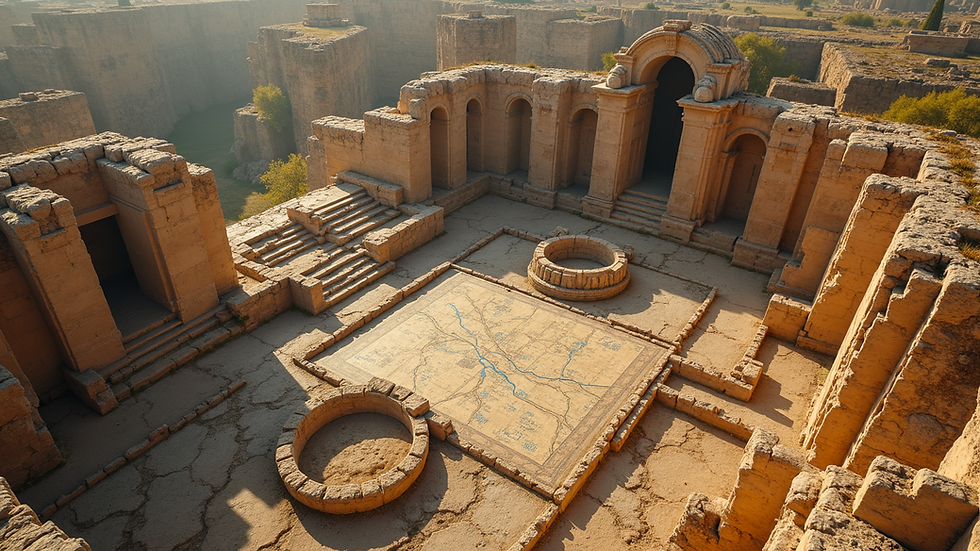How to Create Engaging Adventures for Your D&D Group
- Matthew David
- Jul 22
- 4 min read
Creating adventures that captivate your Dungeons & Dragons (D&D) group is both an art and a science. The right blend of storytelling, character development, and thrilling encounters can transform a good session into a legendary campaign. In this guide, you will learn how to craft engaging adventures that keep your players on the edge of their seats.
Engaging Adventures Start with a Strong Concept
Every great adventure begins with a solid concept. Think about what intrigues you and your players. Is it a quest for a mythical artifact, a mystery to solve in a city filled with intrigue, or perhaps a survival challenge in a harsh environment? Start by brainstorming a list of themes and settings that resonate with your group.
For instance, you might create an adventure centered around a lost civilization. Use map-making tools to design the ruins and surrounding areas. Detail the culture, their fall, and the mysterious forces at play.

When establishing your concept, involve your players. Ask for their input on what they would like to see, including specific enemies or allies they favor. This will encourage engagement and investment in the adventure.
Build Engaging NPCs
Non-playable characters (NPCs) are vital for making your adventures immersive. Create NPCs with depth; consider their backstories, motives, and personalities. Players love to interact with well-thought-out characters.
For example, introduce a mysterious bard who knows about the lost civilization you mentioned earlier. They can provide cryptic hints or throw the party off track with their whimsical tales.
Quick Tip: Make NPCs Memorable
Give each NPC a unique catchphrase or quirk. Perhaps the bard always sings their sentences, or the city guard has an odd obsession with collecting spoons. These details create memorable interactions.

Did Elon Musk Play D&D?
Many are curious about the hobbies of famous entrepreneurs. Elon Musk, the CEO of Tesla and SpaceX, has indeed dabbled in tabletop role-playing games, including D&D. While details are sparse, anecdotes suggest that Musk has appreciated the imaginative worlds that D&D offers. This shows that even the busiest minds can find time for adventures in fantasy realms.
Role-playing games like D&D encourage creativity and strategic thinking—skills Musk utilizes in his entrepreneurial endeavors. The connections between these games and real-life skills can inspire players to approach their own adventures with a unique mindset.
Craft Compelling Quests
Now that you have your concept and characters, it’s time to create quests that will propel your players through your adventure. A well-structured quest typically has a clear objective, obstacles to overcome, and opportunities for character development.
Example Quest Structure:
Quest Hook: The players learn about the ancient ruins through rumors in the tavern.
Obstacles: Bandits or rival adventurers try to deter them, while traps guard the ruins.
Resolution: The players discover an artifact, revealing secrets that could affect their entire campaign.
Your quests should have layers, allowing players to make meaningful choices. This gives them a sense of agency and adds depth to the story.
Player Engagement
Remember to tailor quests to players’ character backstories. Their motivations can shape the direction of the adventure, making it feel personal and impactful.

Use Cliffs, Twists, and Turns
To keep your players invested in the adventure, include unexpected twists and turns. This can be as simple as revealing a trusted ally as a traitor, or introducing a sudden environmental hazard.
Integrate cliffhangers at the end of your sessions to leave players eager for more. Picture this: as they discover a hidden treasure within the ruins, the ground trembles and the entrance collapses, leaving them trapped.
The Power of Environment
Use the environment to influence the storyline. Perhaps the ruins are home to creatures awakened by the party’s presence, forcing them to adapt their tactics to survive.
Incorporate elemental challenges like floods, earthquakes, or magical storms. These add urgency to your quests and deepen the adventure.
Tailor Challenges to Your Group
Not all players enjoy the same aspects of D&D. Some may excel in combat, while others prefer puzzles or social interactions. Understand your group’s dynamics and tailor the challenges accordingly.
For instance, if your group enjoys combat, consider designing encounters with various enemy types. In contrast, if they favor exploration and role-playing, create intricate social challenges, allowing them to negotiate or charm their way through obstacles.
Variety is Key
Blend different encounter styles for a balanced experience. This keeps every session feeling fresh and ensures all players have their moment to shine.
Embrace Feedback and Iteration
Finally, don’t hesitate to seek feedback from your players. After sessions, ask them what they enjoyed, what they found confusing, and what they might want to explore next. This dialogue will help you refine your future adventures.
Remember that D&D is a collaborative storytelling experience. Be willing to tweak the narrative based on player input. This creates a more satisfying experience for everyone involved.
Final Thoughts on Engaging Adventures
Creating engaging adventures for your D&D group is a fun but intricate process. Focus on crafting a strong concept, developing rich NPCs, and designing compelling quests that include unexpected twists. Tailor challenges to your group and create a collaborative storytelling environment where everyone feels valued.
By taking these steps, you can ensure that each session is an unforgettable experience that your players will talk about for years.
If you’re interested in running online D&D campaigns, resources like Penny Blood Adventures offer invaluable tools to enhance your storytelling and organization. Embrace the adventure and happy gaming!



Comments